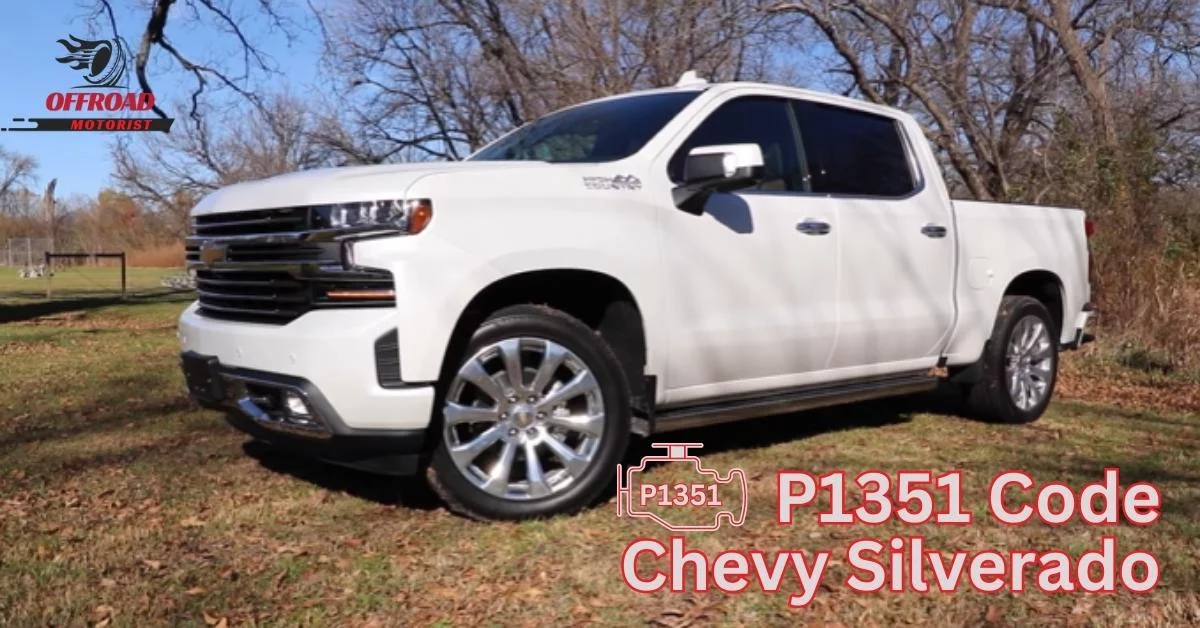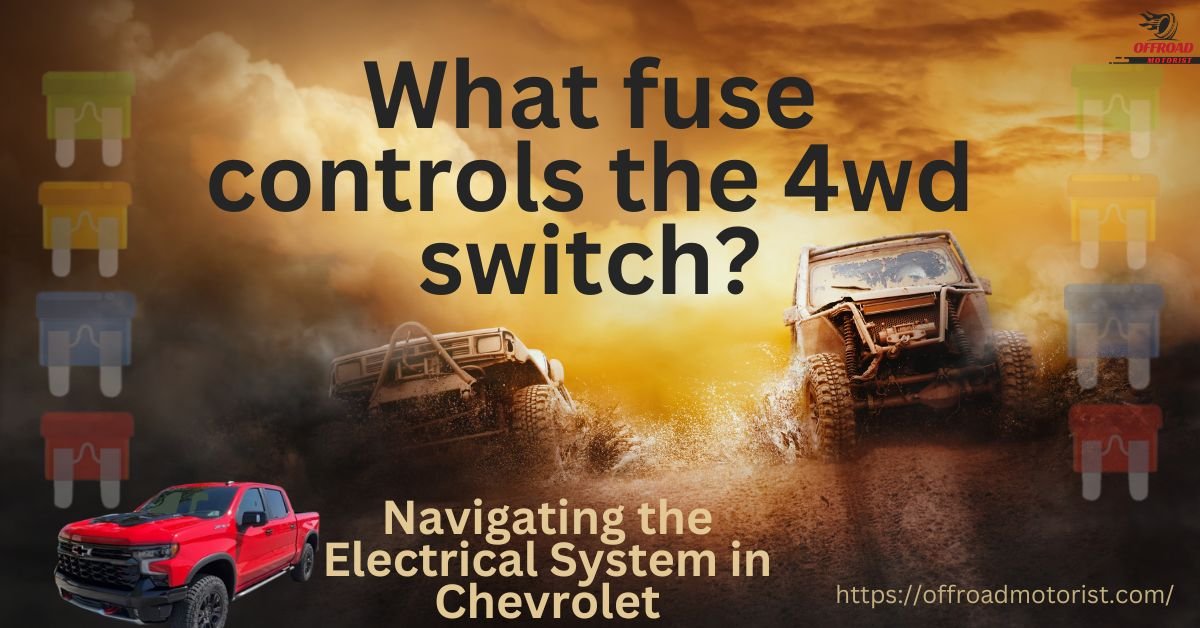Mastering Headlights| Low Beam vs High Beam [Symbols, Functions, and Optimal Usage]
Headlights are a crucial aspect of every vehicle, ensuring safety and visibility on the road. Understanding the functions of low beam and high beam headlights, as well as their respective symbols, can make a significant difference in your driving experience.
In this comprehensive guide, we’ll delve into the essential aspects of low beam vs high beam headlights, and the importance of recognizing headlight symbols.
By mastering the use of high beams vs low beams, you’ll be better equipped to drive safely, especially during nighttime or in challenging weather conditions.
So, buckle up and get ready to learn everything you need to know about low beam and high beam headlights, their symbols, and how to optimize your headlight usage for a secure and enjoyable driving experience.
Mastering Low Beam Headlights: Optimal Usage and Maintenance
We’ll discuss mastering low beam headlights, focusing on optimal usage and maintenance. Understanding these aspects is crucial for ensuring safety, visibility, and courtesy while driving.
1. Decoding the Low Beam Symbol
The low beam symbol, commonly depicted as a headlight icon with downward-slanting lines, plays a vital role in your vehicle’s dashboard. This indicator signifies that your low beam headlights are functioning, delivering crucial illumination for secure driving in various conditions.
2. Unveiling the Functions and Advantages of Low Beam Headlights
Engineered to emit a controlled, evenly-distributed light pattern, low beam headlights offer adequate visibility while preventing glare for oncoming motorists.
These headlights are indispensable for night driving and when visibility is compromised in foggy, rainy, or snowy situations. The low beam’s downward-facing illumination ensures minimal glare for fellow drivers while lighting up the road ahead and the surrounding area.
3. Practical Applications and Best Practices for Low Beam Headlights
Low beam headlights are the default choice in most driving scenarios, particularly in urban settings or when faced with oncoming traffic.
Utilize your low beams when traversing residential areas, as they supply sufficient lighting without producing excessive glare for pedestrians or other road users.
Moreover, low beam headlights are ideal in foggy or adverse weather conditions, as they curtail light reflection and enhance visibility compared to high beam headlights.
4. Expert Tips for Low Beam Headlight Maintenance and Adjustment
For optimal safety and performance, frequently inspecting and maintaining your low beam headlights is vital. Here are some expert tips to help you ensure your low beams operate at peak efficiency:
- Routinely examine your headlights for signs of damage or wear, such as cloudiness, cracks, or dimming.
- Employ a suitable cleaning solution to cleanse your headlight lenses, removing dirt, grime, and oxidation that can drastically diminish light output.
- Swiftly replace any burnt-out or dimming bulbs to guarantee consistent illumination.
- Verify the alignment of your low beam headlights, ensuring they are aimed correctly for optimal visibility without generating glare for other drivers.
- Arrange for regular professional evaluations of your headlight system to identify and rectify any potential issues.
By adhering to these guidelines and comprehending the importance of low beam headlights, you’ll be better equipped to safely and responsibly navigate various driving environments.
Check out our latest article on how to turn off the headlights on a Chevy Impala! Click here to read and learn more.
High Beam Headlights: Usage, Benefits, and Maintenance Tips
We’ll delve into high beam headlights, focusing on their usage, benefits, and maintenance tips. Understanding these aspects is essential for ensuring safety, visibility, and courtesy while driving.
1. Understanding the High Beam Symbol
The high beam symbol, often displayed as a headlight icon with horizontal lines or a blue indicator, is a key element on your vehicle’s dashboard.
This symbol indicates that your high beam headlights are activated, providing enhanced illumination for improved visibility during specific driving conditions.
2. Exploring the Functions and Advantages of High Beam Headlights
High beam headlights produce a brighter and more extensive light pattern than low beams, allowing drivers to see farther down the road and enhance overall visibility.
These headlights are particularly useful for rural or poorly lit areas where street lighting is scarce or nonexistent.
High beams can significantly improve your ability to detect obstacles, pedestrians, or animals at a greater distance, providing more reaction time and promoting safer driving.
3. Ideal Situations and Best Practices for High Beam Headlights
High beam headlights should be used judiciously and in specific driving conditions to avoid blinding other road users. These situations include:
- Rural or unlit roads with no oncoming traffic or street lights.
- When driving at higher speeds where greater visibility is required.
- You need to see further down the road for potential hazards.
It’s essential to switch back to low beam headlights when encountering oncoming traffic or approaching a vehicle from behind to prevent glare and ensure the safety of all road users.
4. Pro Tips for Maintaining and Adjusting High Beam Headlights
Maintaining your high beam headlights is crucial for optimal performance and safety. Follow these expert tips to keep your high beams in excellent condition:
- Regularly inspect your high beam headlights for any signs of damage or wear, such as cloudiness, cracks, or dimming.
- Use a suitable cleaning solution to clean your headlight lenses, removing any dirt, grime, and oxidation that can hinder light output.
- Promptly replace any burnt-out or dimming bulbs to maintain consistent and effective illumination.
- Ensure proper alignment of your high beam headlights, providing optimal visibility without causing glare for other drivers.
- Schedule routine professional assessments of your headlight system to identify and address potential issues.
By adhering to these maintenance tips and understanding when to use high beam headlights, you’ll be well-equipped to handle various driving scenarios safely and responsibly.
Decoding Headlight Symbols: Enhance Your Driving Safety and Confidence
This section will help you familiarize yourself with standard headlight symbols found in vehicles. We’ll explain the importance of recognizing and understanding these symbols and provide tips for memorizing them.
1. Standard Headlight Symbols Found in Vehicles
Being familiar with the standard headlight symbols in your vehicle is crucial for safe driving. Here’s a quick overview of the most common headlight symbols:
- Low Beam Symbol: A headlight icon with downward-slanting lines indicating that your low beam headlights are active.
- High Beam Symbol: A headlight icon with horizontal lines or a blue indicator, signaling that your high beam headlights are turned on.
- Fog Light Symbol: A headlight icon with wavy lines or the word “FOG,” showing that your fog lights are functioning (if your vehicle is equipped with them).
2. Importance of Recognizing and Understanding Headlight Symbols
Recognizing and understanding headlight symbols is vital for the following reasons:
- Safety: Proper headlight usage enhances visibility, helping you spot potential hazards and react accordingly.
- Legal Compliance: Different jurisdictions have regulations regarding headlight usage, and being familiar with headlight symbols helps you comply with these rules.
- Road Etiquette: Knowing when to use low beams or high beams can prevent blinding other drivers and promote a safer driving environment for all road users.
3. Tips for Memorizing Headlight Symbols
To become well-versed in headlight symbols and improve your driving experience, consider the following tips:
- Consult Your Vehicle’s Owner’s Manual: The owner’s manual contains detailed information on all dashboard symbols, including headlight symbols, specific to your vehicle.
- Practice Makes Perfect: Regularly switch between different headlight settings while driving to become more comfortable with their respective symbols.
- Use Visual Aids: Create flashcards or use a mobile app that helps you memorize different dashboard symbols, including headlight symbols.
- Test Your Knowledge: Quiz yourself or ask a friend to help you test your understanding of headlight symbols to ensure you’ve mastered them.
By recognizing and understanding headlight symbols, you’ll be better prepared to use your vehicle’s headlights effectively, resulting in a safer and more enjoyable driving experience.
High Beam vs Low Beam: A Comprehensive Guide to Choosing the Right Headlight Setting
Learn how to choose between high and low beams based on various factors, follow guidelines for switching between them, and avoid common misconceptions and mistakes associated with their usage.
1. Key Factors to Consider When Selecting High or Low Beams
Evaluate the following factors to determine the appropriate headlight setting:
- Visibility Conditions: Opt for low beams in standard driving situations, while high beams are suitable for poorly lit areas or when increased visibility is necessary.
- Weather: During foggy, rainy, or snowy conditions, choose low beams due to their diminished glare and reflection.
- Traffic: When facing oncoming traffic or approaching a vehicle from behind, switch to low beams to avoid blinding other drivers.
- Road Type: Use high beams on rural or unlit roads and low beams in urban or well-lit areas.
2. Best Practices for Transitioning Between High and Low Beams
To ensure safe driving and proper headlight usage, adhere to the following best practices when switching between high and low beams:
- Stay alert: Anticipate upcoming changes in road conditions or traffic and adjust your headlights accordingly.
- Master smooth transitions: Learn to swiftly and seamlessly switch between high and low beams, minimizing disruptions in visibility.
- Employ appropriate signaling: If another driver’s high beams cause glare, a quick flash of your high beams can serve as a polite reminder for them to switch to low beams.
3. Debunking Common Misconceptions and Avoiding Mistakes with High and Low Beams
Steer clear of these widespread misconceptions and errors when using high and low beam headlights:
- Misconception: High beams always offer superior visibility. Although high beams provide more extensive illumination, certain conditions can lead to glare and reflection, making low beams safer.
- Mistake: Remember to switch to low beams when encountering oncoming traffic. This oversight can temporarily blind other drivers, resulting in dangerous situations.
- Misconception: High beams are required for city driving. In reality, low beams typically provide sufficient lighting for safe urban driving.
| Factor | High Beam Headlights | Low Beam Headlights |
| Visibility Conditions | Poorly lit areas or increased visibility | Standard driving situations |
| Weather | Not recommended in fog, rain, or snow | Foggy, rainy, or snowy conditions |
| Traffic | No oncoming traffic or vehicles ahead | Oncoming traffic or vehicles ahead |
| Road Type | Rural or unlit roads | Urban or well-lit areas |
By understanding the differences between high beams and low beams and following the best practices mentioned above, you’ll be well-prepared to navigate various driving scenarios safely and responsibly.
Mastering Headlight Etiquette: Promote Safety and Courtesy on the Road
Understand the significance of proper headlight etiquette and discover essential tips for practicing it. By mastering these techniques, you can contribute to a safer and more courteous driving environment for all road users.
1. The Importance of Proper Headlight Etiquette
Practicing good headlight etiquette is essential for the following reasons:
- Safety: Correct headlight usage enhances visibility, allowing you to spot and react to potential hazards on time.
- Legal Compliance: Adhering to headlight regulations in different jurisdictions ensures you stay within the law and avoid potential fines.
- Courtesy: Proper headlight usage demonstrates respect for fellow road users, preventing glare and creating a safer driving environment.
2. Essential Tips for Practicing Good Headlight Etiquette
To promote safety and courtesy on the road, follow these tips:
- Switch to low beams when approaching oncoming traffic or following another vehicle closely to avoid blinding other drivers.
- Use your high beams judiciously and only when necessary, such as on rural or unlit roads without oncoming traffic.
- Use low beams or fog lights (if equipped) to minimize glare and reflection in foggy, rainy, or snowy conditions.
- Turn off your headlights when parked, even in well-lit areas, to avoid causing glare or distracting other drivers.
- Regularly maintain and adjust your headlights to ensure optimal visibility and alignment.
3. Encouraging Headlight Etiquette Among Fellow Road Users
Promote good headlight etiquette among fellow road users by
- Leading by example: Demonstrate proper headlight usage and adhere to the abovementioned best practices.
- Sharing information: Educate friends and family about the importance of headlight etiquette and its benefits to all road users.
- Offering gentle reminders: If another driver’s headlights are causing glare or distraction, use a quick flash of your high beams as a polite reminder for them to switch to low beams.
By mastering headlight etiquette and encouraging others to do the same, you’ll contribute to a safer, more courteous driving environment for everyone on the road.
Comprehensive Headlight Guide: Ensuring Safety and Visibility on the Road
We’ll delve into the importance of proper headlight usage, share tips for optimal headlight use, and guide you on addressing common headlight-related issues to maintain safety and visibility on the road.
1. Importance of Proper Headlight Usage
Using your headlights correctly is crucial for the following reasons:
- Safety: Appropriate headlight use enhances visibility, allowing you to identify and react to potential hazards promptly.
- Legal Compliance: Adhering to headlight regulations in different jurisdictions ensures you stay within the law and avoid potential fines.
- Courtesy: Proper headlight usage demonstrates respect for fellow road users, preventing glare and creating a safer driving environment.
2. Tips for Optimal Headlight Usage
To maximize safety and visibility on the road, follow these headlight usage tips:
- Familiarize yourself with your vehicle’s headlight symbols and controls to quickly and easily adjust your headlights as needed.
- Inspect, maintain, and adjust your headlights to ensure optimal visibility and alignment.
- Practice good headlight etiquette by switching to low beams when approaching oncoming traffic or following another vehicle closely.
- Use high beams judiciously and only when necessary, such as on rural or unlit roads without oncoming traffic.
- In foggy, rainy, or snowy conditions, use low beams or fog lights (if equipped) to minimize glare and reflection.
3. Addressing Common Headlight-Related Issues
Be prepared to handle common headlight-related issues by
- Regularly checking for signs of wear or damage, such as cloudiness, cracks, or dimming, and promptly addressing any issues.
- Cleaning your headlight lenses with a suitable cleaning solution to remove dirt, grime, and oxidation that can hinder light output.
- Replacing burnt-out or dimming bulbs to maintain consistent and effective illumination.
- Ensuring proper alignment of your headlights, providing optimal visibility without causing glare for other drivers.
- Scheduling routine professional assessments of your headlight system to identify and address potential issues.
Following this comprehensive headlight guide, you’ll be well-equipped to navigate various driving situations safely, responsibly, and courteously.
Frequently Asked Questions About Headlights
In this section, we’ll answer common questions about headlights, covering topics such as when to use high beams, headlight maintenance, and how to adjust and clean your headlights to ensure optimal performance.
When should I use high beam headlights?
High beams should be used in poorly lit areas or when increased visibility is required, such as on rural or unlit roads without oncoming traffic. Remember to switch back to low beams when encountering oncoming vehicles or approaching a vehicle from behind.
Is daytime running lights the same as low beam headlights?
No, daytime running lights (DRLs) are separate from low beam headlights. DRLs are designed to make your vehicle more visible to other drivers during daylight hours, while low beams provide illumination for nighttime driving or low-visibility conditions.
How often should I replace my headlight bulbs?
The lifespan of headlight bulbs varies depending on the type and usage. On average, halogen bulbs last about 500 to 1,000 hours, while LED and HID bulbs can last much longer. Inspecting your headlights regularly and replacing any burnt-out or dimming bulbs promptly is essential.
How do I clean my headlight lenses?
You can clean your headlight lenses using a kit or a mixture of baking soda and vinegar. Apply the cleaning solution to the lens, gently scrub with a soft cloth or sponge, and rinse thoroughly with water. This process can help remove dirt, grime, and oxidation that can hinder light output.
What is the proper way to adjust my headlights?
To ensure proper headlight alignment, park your vehicle on a level surface about 25 feet away from a wall or garage door. Turn on your low beam headlights and observe the light pattern on the wall.
The brightest part of the light should be slightly below the horizontal centerline of the headlight and slightly to the right of the vertical centerline. Consult your owner’s manual for specific instructions on adjusting your vehicle’s headlights.
Why do my headlights appear dim or yellow?
Various factors, including worn-out bulbs, dirty or oxidized lenses, or electrical issues, can cause dim or yellow headlights. Regularly inspect your headlights for wear or damage and perform maintenance to ensure optimal light output.
Final Thoughts
Understanding the differences between high and low beam headlights and recognizing headlight symbols is essential for ensuring safety, visibility, and courtesy on the road.
By familiarizing yourself with your vehicle’s headlight controls, practicing good headlight etiquette, and properly maintaining your headlights, you can significantly contribute to a safer driving environment for all road users.
It’s crucial to stay alert and adapt your headlight usage to different driving conditions and scenarios to optimize visibility and minimize potential hazards.
Following the tips and guidelines discussed in this blog post, you’ll be well-prepared to navigate various driving situations confidently and responsibly.

![How To Turn Off Automatic Headlights On Silverado [A Step-By-Step Guide: 04 Easy Steps] how to turn off automatic headlights on silverado](https://offroadmotorist.com/wp-content/uploads/2023/04/how-to-turn-off-automatic-headlights-on-silverado-150x150.jpg)

![Chevy Transfer Case Interchange Chart [Everything you need to Know] chevy transfer case interchange chart](https://offroadmotorist.com/wp-content/uploads/2023/03/chevy-transfer-case-interchange-chart-150x150.jpg)
![Chevy Tahoe Won't Start in Cold Weather [10 Common Reasons & How to Fix Them] tahoe won't start in cold weather](https://offroadmotorist.com/wp-content/uploads/2023/03/Tahoe-Wont-Start-in-Cold-Weather-150x150.jpg)

![Normal Transmission Temperature Silverado 1500 [Every Thing You Need to Know] Normal Transmission Temperature Silverado 1500](https://offroadmotorist.com/wp-content/uploads/2023/03/Normal-Transmission-Temperature-Silverado-1500-150x150.jpg)



